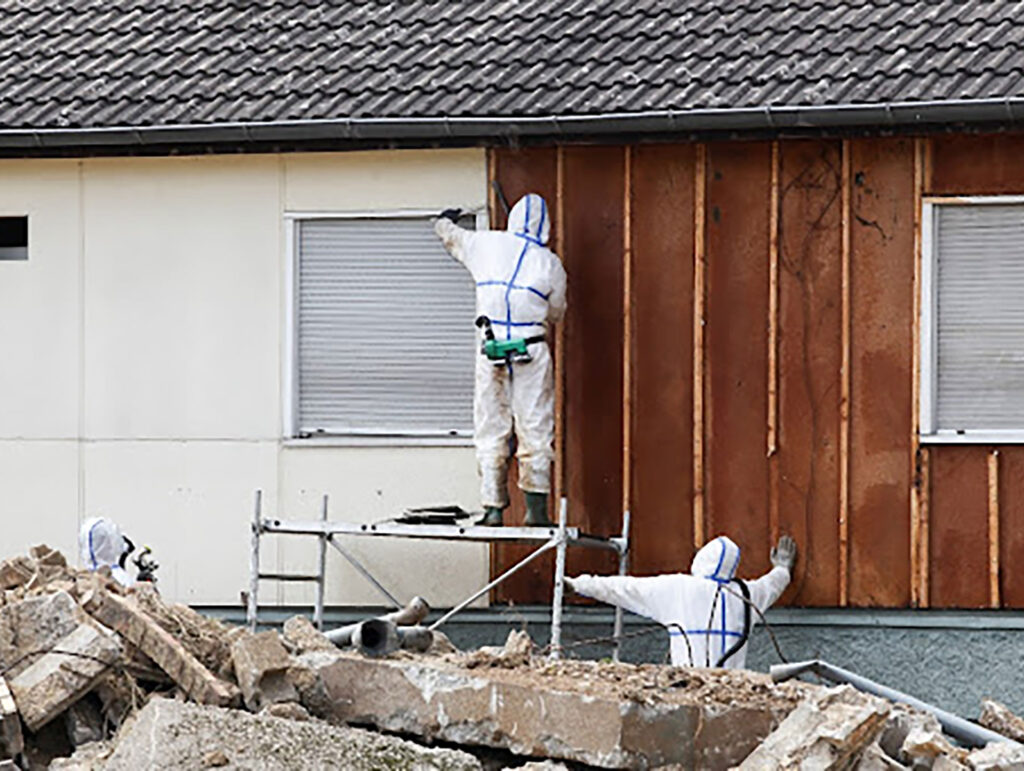Asbestos is a group of naturally occurring minerals that have been used extensively in various industries for decades due to their strength and resistance to heat. Among the different types of asbestos, chrysotile is the most common, accounting for approximately 90-95% of all asbestos used in construction and manufacturing worldwide.
Despite its prevalence and once-ubiquitous presence in products, chrysotile asbestos remains dangerous, particularly for its ability to cause life-threatening illnesses such as mesothelioma. If you or a loved one has been diagnosed with mesothelioma, the connection to asbestos exposure is critical, and Vogelzang Law can provide the legal support necessary to pursue a claim.
Our mesothelioma attorneys in Chicago understand chrysotile asbestos, where it can be found, and how it can cause mesothelioma. Despite its deadly connection to mesothelioma, there are ongoing risks of asbestos exposure in the U.S.
Identifying Chrysotile Asbestos
Chrysotile asbestos, often referred to as “white asbestos,” is a fibrous silicate mineral found in serpentine rock formations. Unlike the other five forms of asbestos, which belong to the amphibole group, chrysotile asbestos has curly, flexible fibers.
Its fibers are microscopic, which makes them easily inhalable when disturbed. Once inhaled, these fibers can lodge in the lining of the lungs, abdomen, or heart, where they may lead to scarring, inflammation, and eventually severe illnesses like mesothelioma.
Why Was It So Widely Used?
Chrysotile asbestos possesses several qualities that made it a favored material in construction, automotive parts, and household products during the 20th century. These include:
- Heat Resistance: Chrysotile asbestos can withstand extremely high temperatures without degrading, making it ideal for insulation in construction, automotive parts like brake pads, and household appliances.
- Durability: The fibers of chrysotile asbestos are highly durable and resistant to wear and tear, meaning products containing asbestos could last a long time without breaking down or needing replacement.
- Flexibility: Unlike the more brittle amphibole forms of asbestos, chrysotile fibers are flexible, making them easier to weave into textiles, gaskets, and other products that require a material that can bend or be molded.
- Fire Resistance: Chrysotile, like other forms of asbestos, is non-combustible and resists burning, which made it an excellent material for use in products that needed fireproofing.
- Chemical Resistance: Chrysotile asbestos is resistant to many chemicals and acids, making it suitable for environments where chemical exposure was a risk, such as in industrial applications.
- Affordability and Availability: Chrysotile asbestos was mined extensively worldwide, making it a readily available and cost-effective material, contributing to its widespread use in many industries.
These combined qualities made chrysotile asbestos a versatile and attractive material in manufacturing, construction, and consumer products despite the severe health risks that would later be recognized.
The Danger of Chrysotile Asbestos
Chrysotile asbestos has often been referred to as “less dangerous” than other forms of asbestos, but this is misleading. While it may have different properties than amphibole asbestos, it still poses significant risks, especially over long periods of exposure. Any form of asbestos exposure can lead to devastating health consequences.
One reason chrysotile asbestos remains dangerous is that its fibers, although flexible, can still penetrate body tissues. These fibers become embedded in the mesothelial cells, which line the lungs, abdomen, and other organs. Over time, the irritation and inflammation caused by these fibers can lead to the development of malignant mesothelioma, a form of cancer with no known cure.
Where is Chrysotile Asbestos Found?
Due to its wide-ranging use, chrysotile asbestos can be found in many older buildings and products. While the use of asbestos has been significantly reduced and regulated in the U.S., chrysotile is still present in various materials, which means exposure risks continue.
Common Locations of Chrysotile Asbestos Exposure
- Construction Materials: Chrysotile was frequently used in insulation, roofing, cement, floor tiles, and drywall. Buildings constructed before the 1980s are particularly at risk for containing asbestos.
- Automotive Parts: Chrysotile asbestos was used in brake pads, clutches, and gaskets for its heat resistance. While newer vehicles may not contain asbestos, older vehicles or those with imported parts could still present exposure risks.
- Household Products: Some home appliances, including hair dryers, toasters, and irons, used to contain chrysotile asbestos for heat insulation.
- Industrial Sites: Factories, shipyards, and refineries often used chrysotile asbestos in their machinery, exposing workers to its dangers.
Although new uses of asbestos have been banned mainly in the U.S., older buildings and products still contain it, leaving the risk of exposure intact for many workers, homeowners, and even bystanders.
Is Chrysotile Asbestos Still a Danger in the U.S.?
While many asbestos products have been banned or regulated, chrysotile asbestos is still legally used in some limited applications in the U.S. under strict guidelines. The Environmental Protection Agency (EPA) continues to monitor asbestos use, but it is not completely banned.
Renovations, demolitions, or repairs in buildings containing asbestos materials can release harmful fibers into the air, creating potential hazards for workers and residents. Additionally, workers in industries that continue to use asbestos, such as manufacturing or automotive repair, may still encounter chrysotile fibers.
As a result, chrysotile asbestos remains a real and present danger to public health.
How Chrysotile Asbestos Causes Mesothelioma
Mesothelioma is an aggressive cancer that primarily affects the lining of the lungs (pleura), abdomen (peritoneum), or heart (pericardium). This rare cancer is almost exclusively caused by exposure to asbestos.
When asbestos fibers are inhaled or swallowed, they can lodge in the thin tissue layer covering internal organs. Over time, the irritation caused by these fibers can trigger cellular mutations, leading to the development of mesothelioma.
This process can take decades, which means that individuals exposed to chrysotile asbestos in the past may not develop mesothelioma until many years later.
Because chrysotile fibers are so small, they can remain airborne for long periods after being disturbed. This increases the chances of inhalation and deep lung penetration, where the fibers cause the most harm. Even minimal exposure to chrysotile asbestos can be enough to cause mesothelioma, making it a persistent risk even with limited contact.
After a Mesothelioma Diagnosis: Connecting the Dots to Exposure
Receiving a mesothelioma diagnosis can be overwhelming. Many patients are left wondering how they were exposed to asbestos and what their options are for compensation.
The key to pursuing justice lies in identifying the source of asbestos exposure, which is often linked to workplaces, older buildings, or products that contained chrysotile asbestos. Because it can take such a long time for mesothelioma to develop after asbestos exposure, tracking down this kind of information can be a daunting task.
This isn’t something you have to handle on your own. Focus on your healing journey and talk to a lawyer for help. The mesothelioma attorneys at Vogelzang Law have the experience and resources to help you connect your illness to asbestos exposure. They will guide you through the legal process, from identifying liable parties to filing claims and pursuing compensation.
How Vogelzang Law Can Help
At Vogelzang Law, we understand that a mesothelioma diagnosis is life-changing. The process of identifying asbestos exposure and pursuing a legal claim can feel overwhelming, especially when you’re already dealing with the emotional and physical challenges of cancer. This is where we can step in to ease the burden.
Building a Strong Case
Our lawyers work closely with medical experts, industrial hygienists, and asbestos researchers to determine where and how chrysotile asbestos exposure occurred. We handle every aspect of the investigation and case preparation, taking the responsibility off your shoulders.
Whether you were exposed at a job site, through household products, or in an industrial setting, we know how to trace asbestos exposure and hold the responsible parties accountable. Our team will pursue compensation for your medical expenses, lost wages, and the pain and suffering that comes with a mesothelioma diagnosis.
Pursuing a Claim
Mesothelioma claims often involve large corporations that knew about the dangers of asbestos but failed to protect their workers or the public. Vogelzang Law has experience in taking on these companies and securing compensation for our clients.
While each state has its own laws regarding asbestos-related claims, we are equipped to handle cases nationwide. We consider each state’s specific laws and will fight for the compensation you deserve, regardless of where you were exposed to chrysotile asbestos.
Contact Vogelzang Law Today. We Will Fight for You.
If you or a loved one has been diagnosed with mesothelioma, Vogelzang Law can help you connect your illness to asbestos exposure and pursue compensation to ease the financial burden. We understand the challenges you’re facing and are here to support you every step of the way.
Let our team take on the legal complexities so you can focus on your health and well-being. Contact Vogelzang Law today to learn how we can help you with your mesothelioma case. Call our main office in Chicago at 312-466-1669 or contact us online.



